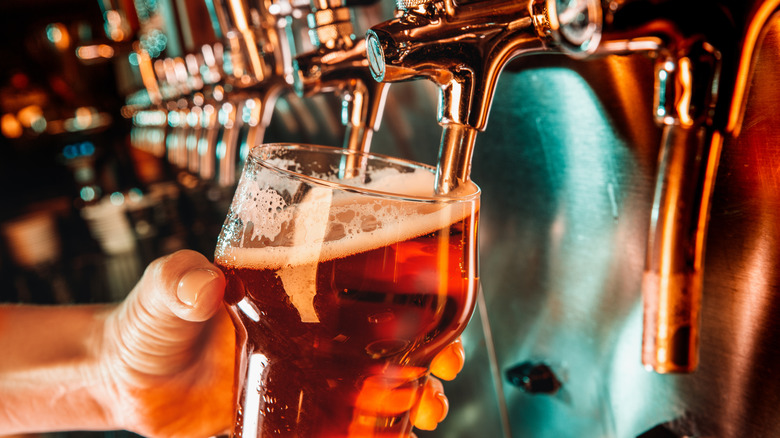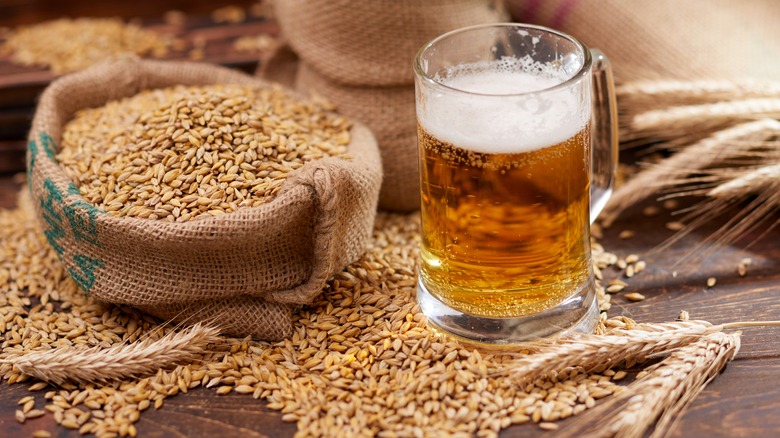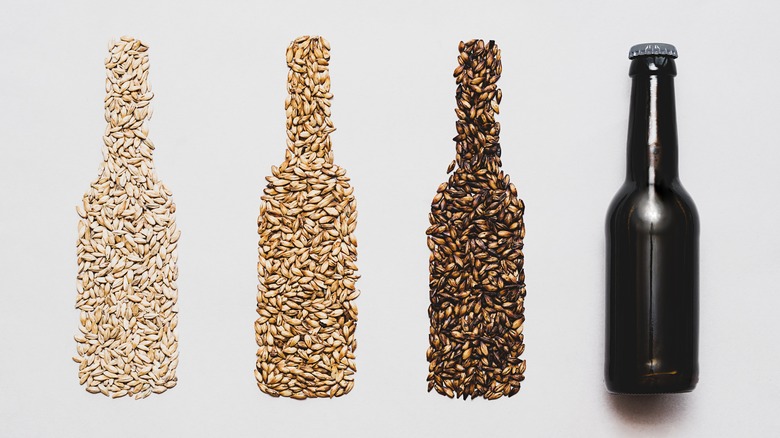Why Adjuncts Are An Essential Part Of The Beer Brewing Process
Walk into any beer aisle or bottle shop these days, and you'll be confronted with lots of choices. With more than 9,000 breweries operating in the United States alone (according to the Brewers Association), there's a brew for every taste and a style for every occasion. How do you know the difference between an IPA and a brown ale, though? It all comes down to the ingredients.
At its base, beer is a simple product. According to the German brewing purity law known as the Reinheitsgebot (per BBC), beer is made up of just four ingredients: water, malt, yeast, and hops. Way back when the guidelines of the law were created in 1516, two of the biggest reasons for the strict rules were to prevent brewers from using too much wheat, which was needed for making bread, and also to make sure brewers weren't putting anything that could be toxic into beer. The Reinheitsgebot later became a law in 1906, and it's still a thing today.
We know a lot more about brewing now than we did in the 1500s, of course, and naturally, we aren't all still drinking strictly German lagers (though they are tasty). There are hundreds of recognized beer styles these days. And while all of them are made with the four main ingredients, a lot of them are also made with extra grains and flavorings known as adjuncts.
What's an adjunct?
In simple terms, an adjunct is anything extra that's added to a beer recipe. Think of them like spices when cooking (and in fact, many spices can be adjuncts). Adjuncts can change the flavor, mouthfeel, color, and clarity of a beer. Almost all modern beer styles employ an adjunct or two in the brew. According to Brew Your Own magazine, some of the most common adjuncts are grains such as rice, corn, wheat, and sugars. They're then divided into mashable adjuncts and kettle adjuncts.
Mashable adjuncts, per Brew Your Own, are starchy grains that need to be soaked in warm water to convert their starches into sugars that can be fermented. Brewers already do this step with the barley when making beer, so any mashable adjuncts are added at the same time in the process. The most common mashable adjuncts are rice, corn, oats, and rye.
Kettle adjuncts are added during the boil, which is the step that comes right after the mashing. When the sugars are all dissolved in the water, which is known as "wort," (per Craft Beer & Brewing), the unfermented beer is boiled for around 60 minutes to sterilize the solution, clarify the beer, and extract the hops (per Brew Your Own). It's then chilled and fermented. The most common kettle adjuncts are sugars, such as honey or Belgian "candi" syrup, and specialty grains sometimes referred to as "crystal" malts, which add specific flavors and colors to beer (per Brew Your Own).
Beers with adjuncts
You may not realize just how many beers are made with adjuncts, but lots of classic styles rely on adjuncts to create their distinctive characteristics. One of the most recognizable varieties to use adjuncts is American Pilsner, such as Budweiser and Coors. These breweries use corn or rice in the mash to make clear, highly fermentable wort, which creates a clean, crisp taste, according to Anheuser-Busch.
Belgian and Belgian-style beers use candi sugar or syrup, which are invert sugars that boost the alcohol levels, according to Northern Brewer. Belgian styles also often use spices, such as coriander, to create unique flavors. Similarly, brown ales and stouts get their distinctive color from steeping crystal malts in the wort, English bitters frequently use corn, and Germans use rye to make "Roggenbier" (per the Beer Judge Certification Program).
And in the craft brewing realm, all bets are off. Brewers add all kinds of culinary ingredients to beer to make something special, including coffee, chocolate, fruits and vegetables, tea leaves, chili peppers, mushrooms — even oysters and breakfast cereal (per Bon Appétit) are options. Today's brewers come up with new riffs on beer styles every day, from black IPA to hibiscus, gose to kombucha. If a flavor makes sense in food, chances are good that it will make an interesting beer as well.


